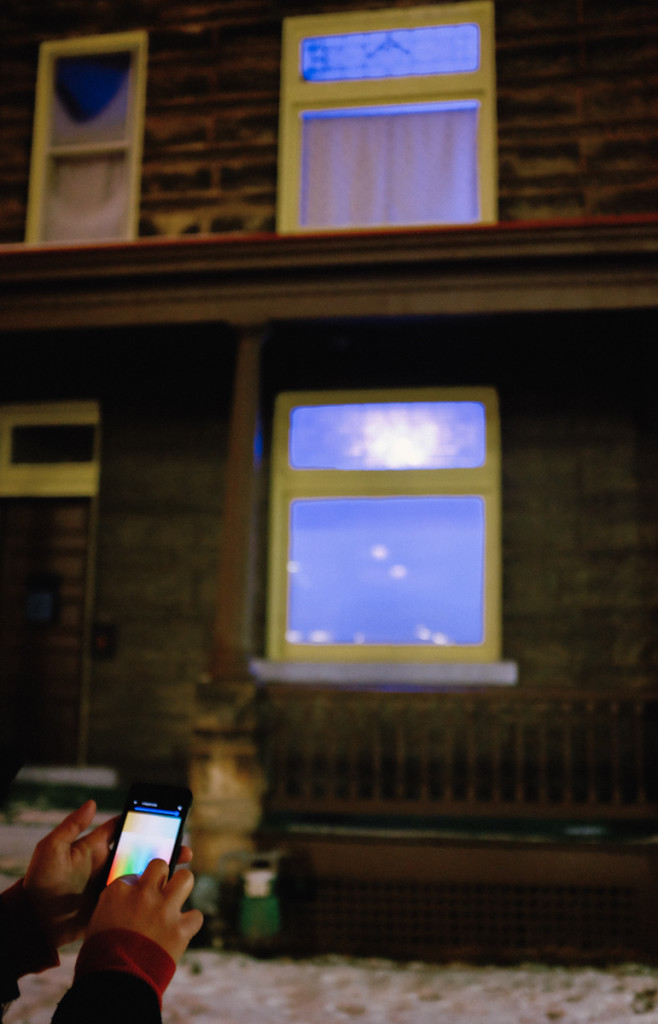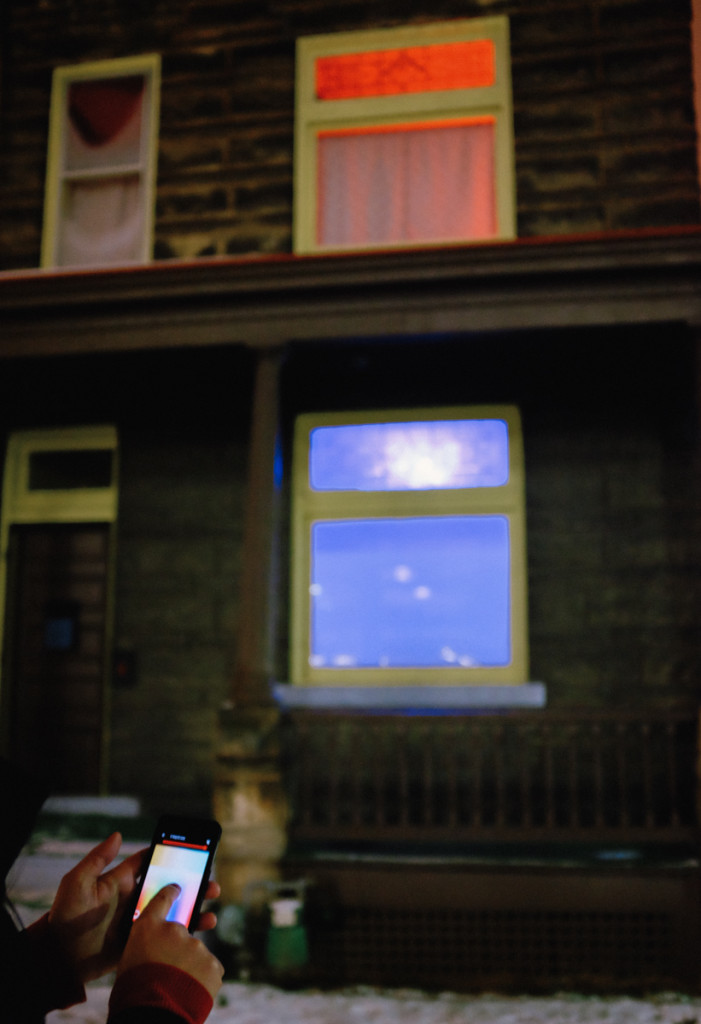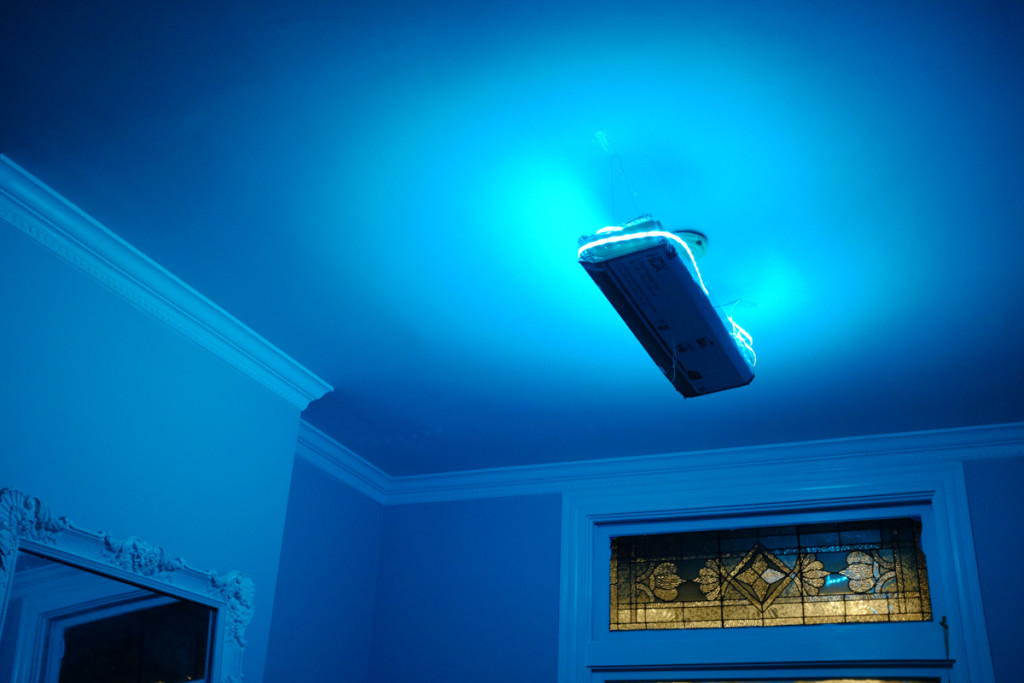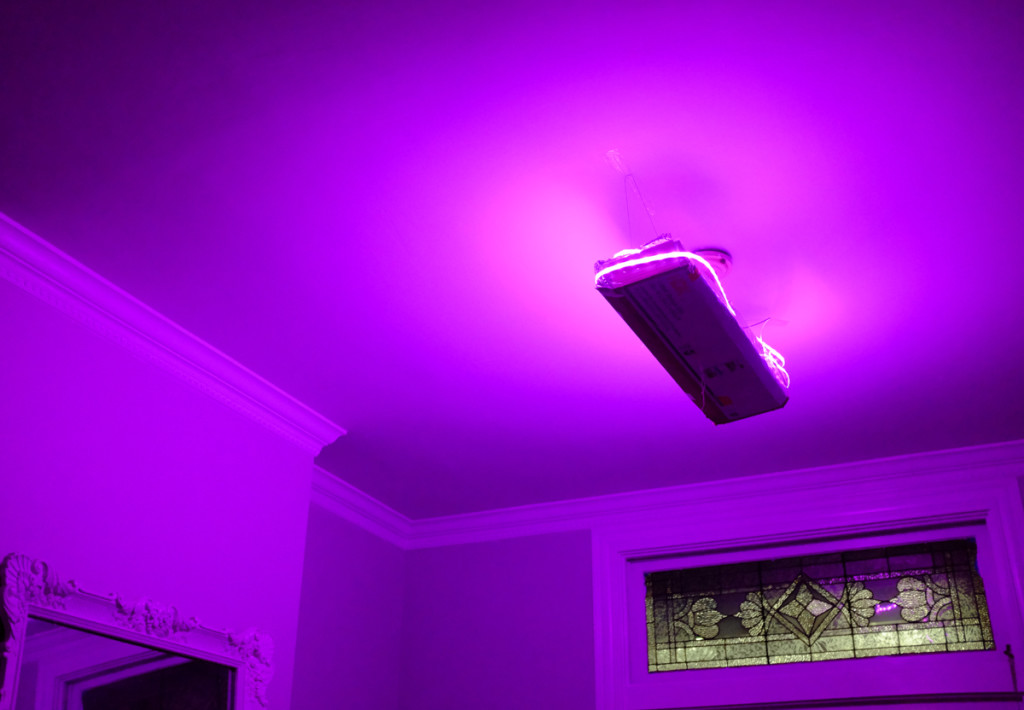

Who doesn’t dream of a modern home of wifi connected devices, changing the color temperature of your room with the click of a button? We’ve been eying up the bulbs and LED strips from Philips Hue for quite a while now. I treated myself to a set of new pendants slated to be the centerpiece above our dining room table last summer. While we’ve been waiting to install them until after the ceilings were finished, we’ve been trying to finalize a design for the lighting canopy. Knowing that the pendants themselves won’t give off enough ambient light for the room, the Philips Hue LED strips seemed like a great solution to incorporate into the canopy.
Ed rigged up a temporary panel to act as the canopy while we tested the lights (an empty cardboard box). In the evening the lights look great, filling the room with rich color and changing easily through the phone interface. The problems? (Spoiler alert: we returned them)


1. We don’t live in a discotheque.
The color changing effect is really exciting and novel for about a day. Then you show your mother the cool toy you bought with the Home Depot gift card she gave you at Christmas, and immediately realize the mistake you’ve made by the horrified look in her eyes. If you aren’t an 8 year old that wants to pretend your room is underwater and you’re not outfitting an Asian theme restaurant, I’d think long and hard about this purchase.
2. The white light on the LED strips is lousy.
While it handles rich colors in low light extremely well, the LED strips just don’t excel at white light. That creates two problems — it is hard to reach a subtle light temperature and it doesn’t provide adequate brightness during daylight. The Philips Hue bulb we purchased didn’t fall into the problems, but once we decided the LED strips had to go, it was hard to justify keeping the hub for a single bulb. Which brings me to the next problem…
3. The system is not cheap.
The hub, two strip lights, and one bulb set us back about $260. After we realized that we would never utilize the color changing enough, the price tag was just too hard to justify.
4. Using your phone as a lightswitch is not as great as you think.
I was really impressed by a lot of the features that came with the Hue hub. The control panel was really responsive, the subtle gradient changes on the bulb were really funny to play around with, and I was really falling for the alarm function. Relying on your phone as a lightswitch, however, is just not that practical or intuitive. I found myself always reaching for the switch before my phone, which wasn’t always in hand. Also, keep in mind that if you turn the lights off with the phone, you have to turn them back on with the phone or your physical light switch is completely useless. I was constantly running up and down the stairs to retrieve my phone just to turn the lights off and on.

The white light on the LED strips is not bright enough to properly light a room during daylight.